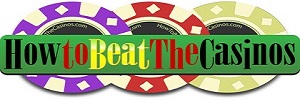Card Counting vs Standard Play: What Really Pays?
G’day, Dave the Gambler here from HowToBeatTheCasinos.com, and today we’re diving into one of the oldest debates on the blackjack floor—card counting vs standard play. Which gives you better odds? Which keeps you out of trouble? And is it really worth the mental effort, or are you better off just sticking to basic strategy and hoping for a hot shoe?
I recently watched a great video where the creator ran two back-to-back blackjack sessions: one using standard play, and one using card counting. He tracked every bet, every decision, every up and down. It wasn’t a staged, edited show—it was raw, realistic play. And as someone who’s tried both approaches over the years, I’ve got some thoughts. Let’s get into it.
The Basics of Each Approach
First up, let’s be clear about what we’re comparing.
Standard play means sticking to basic blackjack strategy: you hit, stand, double, or split based on the mathematically correct move for each hand. No guesswork, no gut feeling—just the right play, every time. You can find strategy cards online, and most casinos even let you use them at the table.
Card counting, on the other hand, adds an extra layer. You keep track of the ratio of high cards to low cards left in the deck. The most well-known method is the Hi-Lo system, where you assign +1 to low cards (2–6), -1 to high cards (10–A), and 0 to neutral cards (7–9). You then adjust your bets and strategy based on the count.
Sound intense? It is. But it also reduces the house edge to nearly zero—or can even swing it slightly in your favour if done perfectly.
So How Did the Test Go?
In the video, the guy played two sessions with the same starting bankroll. First, he played 100% standard strategy. Every decision was spot on. He made decent plays, avoided emotion, and stuck to his limits. The result? A small loss. Nothing brutal, but still in the red.
Then he played another session with card counting. Same table. Same rules. This time, he adjusted his bet sizes as the count changed. During negative counts, he bet the minimum. When the count was positive, he increased. He also varied his play slightly—standing on soft 18 against a 10 when the count suggested the deck was rich in face cards, for example.
The result? A solid win. Not a life-changing payday, but a real, noticeable edge.
The Takeaway: Card Counting Can Work
Let’s not beat around the bush—card counting can give you an advantage. If done correctly, it can shave the house edge from around 0.5% to a negative value, meaning you have the edge. That’s massive. Most casino games never give the player a shot at being in the black over time. Blackjack, with counting, is the exception.
But here’s the catch: it’s not easy. It’s not fun, either—not in the traditional sense. It’s mental work. You’re tracking the count, calculating the true count, adjusting your bets, keeping a poker face, and still playing perfect strategy—all while the pit bosses keep an eye on you. That’s not casual gambling. That’s a job.
The Reality of Playing Standard Strategy
Most casual players stick with basic strategy, and there’s nothing wrong with that. If you play perfectly, you’re giving the house just a 0.5% edge—one of the lowest in the casino. It’s better than the slots, better than roulette, and way better than anything with a big flashing jackpot sign.
But make no mistake—even with perfect strategy, the house still has the edge. Over time, you will lose more than you win. The key is to lose slowly, enjoy the game, and walk away when you’re ahead.
The Limitations of Card Counting in Today’s Casinos
Now here’s where things get tricky. Back in the day, casinos used single-deck games and dealt deep into the shoe. That gave card counters a nice big window to work with. These days? Multi-deck shoes. Early shuffling. Automatic shufflers. Cameras. Pit bosses trained to spot counters. And if you’re suspected? They’ll back you off faster than you can say “true count.”
Plus, the moment you start varying your bet size, you stand out. It’s the dead giveaway of a counter. That’s why some skilled players use more advanced methods—camouflage betting, team play, or Wonging (jumping in and out of the shoe based on count). But again, this takes serious training and discipline. It’s not a Saturday night hobby.
So What Should You Do?
Here’s my advice, straight from experience.
If you want to give card counting a real go, do it properly. Read books like Beat the Dealer or Blackjack Attack. Practice at home. Use an online trainer. Get your count speed down. Learn how to calculate true count based on deck penetration. And only then, try it in a live setting. Even then, be discreet. Play casually. Don’t get greedy.
If that all sounds like too much work, just stick with standard strategy. You’ll still be way ahead of 90% of players, most of whom make wild plays like standing on 16 vs. a dealer 10 or splitting 10s like they’re on a sugar rush.
No matter what path you choose, the key is consistency. Stick to your plan. Manage your bankroll. Set win and loss limits. And never let emotions drive your play.
Bonus Tip: Hybrid Strategy
Some players (myself included) use a light form of counting without going full pro. You keep a rough count in your head, adjust a little, and bet slightly higher when things feel good. It’s not technically “beating the game,” but it gives you a bit more engagement and can help you avoid betting big in cold shoes. Just don’t expect long-term profit this way. Think of it as playing smarter—not playing invincible.
Final Thoughts
Card counting isn’t a myth. It’s real. It works. But it’s a serious undertaking. You’ve got to train like it’s your job, have nerves of steel, and be willing to get tossed if you’re too obvious.
Standard play is easier, safer, and still offers solid odds if done right.
In the end, it comes down to your goals. Want to relax, sip a drink, and enjoy a few hands? Stick to basic strategy. Want to grind out an edge, play with discipline, and maybe run into some heat? Then counting’s your game.
Whatever you do, do it with your eyes open. Because beating the casinos isn’t just about luck—it’s about knowledge, discipline, and knowing when to walk away.
Until next time, stay sharp, stay cool, and play smart.
—Dave the Gambler

